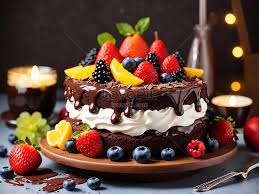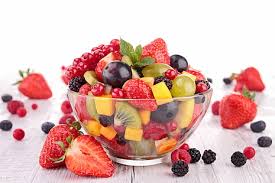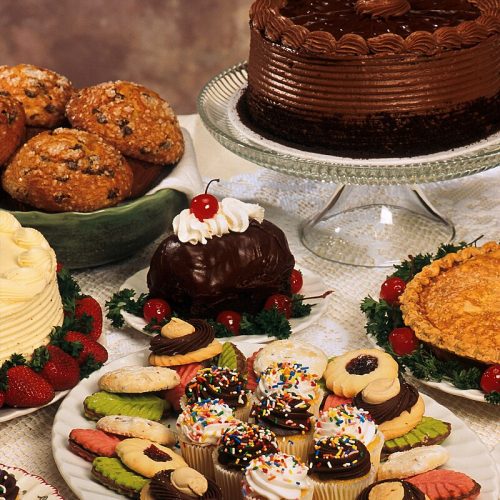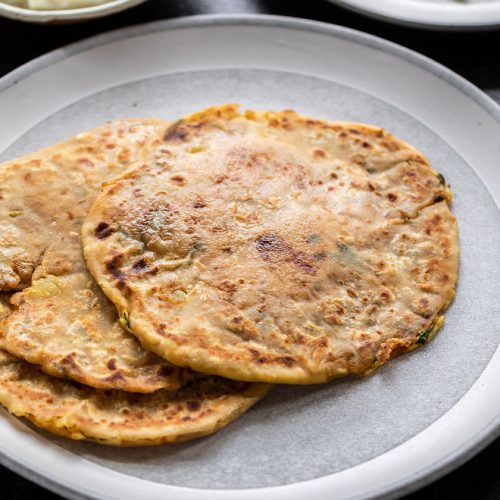A cake is a celebration in itself—soft, moist layers of flavor that melt in your mouth with every bite. Whether it’s a classic spongy vanilla, a rich chocolate decadence, or a tangy citrus-infused creation, each bite is a journey of textures and tastes. Imagine the fluffiness of a perfectly baked sponge, its delicate crumb absorbing just the right amount of frosting, creating a heavenly balance of lightness and richness. Some cakes are layered with silky buttercream, while others may be drenched in luscious ganache, adding an indulgent sheen. Fruit-filled cakes offer a burst of refreshing sweetness, while nut-studded versions bring a satisfying crunch that contrasts with their tender texture. From multi-tiered wedding cakes adorned with intricate decorations to the humble yet comforting homemade cake with its warm, familiar aroma, cakes ”””””””””””””””””””””””””””””””””””””””””””””””””””””””””””””””””””””””’are the epitome of joy and togetherness—perfect for any occasion, big or small. Every slice invites you to savor the simple pleasure of sweetness and the artistry behind every carefully crafted layer. Cakes [edit] Main article: Cake Cakes are sweet tender breads made with sugar and delicate flour. Cakes can vary from light, airy sponge cakes to dense cakes with less flour. Common flavorings include dried, candied or fresh fruit, nuts, cocoa or extracts. They may be filled with fruit preserves or dessert sauces (like pastry cream), iced with buttercream or other icings, and decorated with marzipan, piped borders, or candied fruit. Cake is often served as a celebratory dish on ceremonial occasions, for example weddings, anniversaries, and birthdays. Small-sized cakes have become popular, in the form of cupcakes and petits fours, an example of which can be the Portuguese “bolo de arroz”.
DESERT SWEETS
A sweet dessert is like a little bite of happiness, often crafted with rich flavors and textures that delight the senses. Imagine a velvety chocolate mousse, its creamy texture melting in your mouth, or a delicate slice of vanilla bean crème brûlée, its crisp caramelized top giving way to a silky custard beneath. There are golden, buttery pastries, flaky and warm, filled with sweet fruit compotes or a smooth almond cream. Fresh fruit tarts gleam with jewel-like berries atop a crisp, buttery crust, balanced by a soft, tangy cream filling. Each dessert is a little work of art, balancing sweetness, texture, and flavor to create a perfect ending to any meal. Whether it’s the indulgent richness of a molten lava cake or the lightness of a zesty lemon sorbet, the joy of a sweet dessert is in its ability to satisfy the sweetest of cravings. Dessert is a course that concludes a meal. The course consists of sweet foods, such as cake, biscuit, ice cream and possibly a beverage such as dessert wine and liqueur. Some cultures sweeten foods that are more commonly savory to create desserts. In some parts of the world there is no tradition of a dessert course to conclude a meal. The term dessert can apply to many sweets, such as biscuits, cakes, cookies, custards, gelatins, ice creams, pastries, pies, puddings, macaroons, sweet soups, tarts, and fruit salad (fruit is commonly found in dessert courses because of its naturally occurring sweetness). Historically, the dessert course consisted entirely of foods “from the storeroom” (de l’office), including fresh, stewed, preserved, and dried fruits; nuts; cheese and other dairy dishes; dry biscuits (cookies) and wafers; and ices and ice creams.[1] Sweet dishes from the kitchen, such as freshly prepared pastries, meringues, custards, puddings, and baked fruits, were served in the entremets course, not in the dessert course. By the 20th century, though, sweet entremets had come to be included among the desserts.[2] [3] CAKE A cake is a celebration in itself—soft, moist layers of flavor that melt in your mouth with every bite. Whether it’s a classic spongy vanilla, a rich chocolate decadence, or a tangy citrus-infused creation, each bite is a journey of textures and tastes. Imagine the fluffiness of a perfectly baked sponge, its delicate crumb absorbing just the right amount of frosting, creating a heavenly balance of lightness and richness. Some cakes are layered with silky buttercream, while others may be drenched in luscious ganache, adding an indulgent sheen. Fruit-filled cakes offer a burst of refreshing sweetness, while nut-studded versions bring a satisfying crunch that contrasts with their tender texture. From multi-tiered wedding cakes adorned with intricate decorations to the humble yet comforting homemade cake with its warm, familiar aroma, cakes are the epitome of joy and togetherness—perfect for any occasion, big or small. Every slice invites you to savor the simple pleasure of sweetness and the artistry behind every carefully crafted layer. Cakes [edit] Main article: Cake Cakes are sweet tender breads made with sugar and delicate flour. Cakes can vary from light, airy sponge cakes to dense cakes with less flour. Common flavorings include dried, candied or fresh fruit, nuts, cocoa or extracts. They may be filled with fruit preserves or dessert sauces (like pastry cream), iced with buttercream or other icings, and decorated with marzipan, piped borders, or candied fruit. Cake is often served as a celebratory dish on ceremonial occasions, for example weddings, anniversaries, and birthdays. Small-sized cakes have become popular, in the form of cupcakes and petits fours, an example of which can be the Portuguese “bolo de arroz”. Puddings [edit] Puddings are similar to custards in that their base is cream or milk. However, their primary difference is that puddings are thickened with starches such as corn starch or tapioca. On the other hand, custards are thickened using only eggs and are usually more firm.[22] Small cakes and pastries [edit] Main article: Biscuits Biscuits or cookies are small disks of sweetened dough, similar in composition to a cake. The term “biscuit” is a derivation of Latin for twice-baked,[23] [c] while the term “cookie” is a Dutch diminutive for koek, meaning cake. Some examples of this dessert include a ginger nut, shortbread biscuit and chocolate chip cookie. In Commonwealth English, the term “biscuit” refers to this type of dessert in general, with “cookie” reserved for a specific type of drop cookie; in North America, the term “cookie” typically refers to all forms of this dessert, with “biscuit” more commonly referring to a type of bread. Other small cakes and pastries can also be counted as under these terms, due to their size and relative similarity to cookies and biscuits, such as jaffa cakes and Eccles cakes. Confection [edit] Main articles: Chocolate and Candy Confection, also called candy, sweets or lollies, features sugar or honey as a principal ingredient. Many involve sugar heated into crystals with subtle differences. Dairy and sugar based include caramel, fudge and toffee or taffy. They are multiple forms of egg and sugar meringues. and similar confections. Unheated sugar co-adulate into icings, preservatives and sauces with other ingredients. Chocolate [edit] Theobroma cacao beans can be a substitute or more commonly mixed with sugar to form chocolate. Pure, unsweetened dark chocolate contains primarily cocoa solids. Cocoa butter is also added in varying proportions. Much of the chocolate currently consumed is in the form of sweet chocolate, combining chocolate with sugar. Milk chocolate is sweet chocolate that additionally contains milk powder or condensed milk. White chocolate contains cocoa butter, sugar, and milk, but no cocoa solids. Dark chocolate is produced by adding fat and sugar to the cacao mixture, with no milk or much less than milk chocolate. CUSTARD Custard is a luxurious, velvety dessert that envelops the senses in its creamy smoothness. Made from a delicate combination of eggs, milk, and sugar, it has a rich, silky texture that seems to melt effortlessly on the tongue. The flavor is subtly sweet, with hints of vanilla or other flavorings like nutmeg, cinnamon, or citrus zest, depending on the variation. Custard can be served in many forms—warm and comforting as a pudding, or chilled to create a cool, refreshing treat. It may also appear as a silky filling in tarts, pies, or layered cakes, where its smoothness contrasts beautifully with a crisp crust. Sometimes it’s baked until golden and set, forming a delicate caramelized top, as in crème brûlée, where the crack of the sugar crust gives way to a soft, rich custard beneath. Whether spooned from a bowl or layered in a dessert, custard brings a comforting elegance to
FRUIT SALAD
Fruit salad is a vibrant, refreshing medley of nature’s sweetest offerings, each bite bursting with juiciness and color. It’s an inviting combination of fresh, ripe fruits, often including juicy strawberries, tangy citrus segments, crisp apples, luscious melon, and exotic touches like mango or kiwi. The fruits are usually cut into bite-sized pieces, allowing their natural flavors to blend together harmoniously. Some fruit salads may be lightly tossed in a drizzle of honey or a splash of citrus juice to enhance the sweetness or balance the acidity, while others are kept pure, letting the fruits shine on their own. Occasionally, a handful of fresh mint or a sprinkle of toasted nuts is added for a fragrant, crunchy contrast. The result is a light and invigorating dish, perfect for a refreshing snack, a healthy side, or a colorful addition to a summer gathering. Each spoonful offers a burst of freshness, making fruit salad a perfect way to enjoy the natural sweetness of seasonal produce in a simple, wholesome form. Fruit salad is a dish of cut or small pieces of fruit that can be served as an appetizer, dessert, or side. It can be served with a liquid like juice or syrup, or without a sauce. Fruit salad can be made with a variety of fruits, and there are many different types of fruit salad, including: Fruit salad is a dish consisting of various kinds of fruit, sometimes served in a liquid, either their juices or a syrup. In different forms, fruit salad can be served as an appetizer or a side as a salad. Fruit salad – Wikipedia Wikipediahttps://en.wikipedia.org › wiki › Fruit_salad
CUSTARD
Custard is a luxurious, velvety dessert that envelops the senses in its creamy smoothness. Made from a delicate combination of eggs, milk, and sugar, it has a rich, silky texture that seems to melt effortlessly on the tongue. The flavor is subtly sweet, with hints of vanilla or other flavorings like nutmeg, cinnamon, or citrus zest, depending on the variation. Custard can be served in many forms—warm and comforting as a pudding, or chilled to create a cool, refreshing treat. It may also appear as a silky filling in tarts, pies, or layered cakes, where its smoothness contrasts beautifully with a crisp crust. Sometimes it’s baked until golden and set, forming a delicate caramelized top, as in crème brûlée, where the crack of the sugar crust gives way to a soft, rich custard beneath. Whether spooned from a bowl or layered in a dessert, custard brings a comforting elegance to any dish, offering a sweet, indulgent experience with every spoonful. Custards [edit] Main articles: Custard and Pudding Kheer Phirni Phirni and Kheer are two of the most popular puddings in the Indian subcontinent. These kinds of desserts usually include a thickened dairy base. Custards are cooked and thickened with eggs. Baked custards include crème brûlée and flan. They are often used as ingredients in other desserts, for instance as a filling for pastries or pies. Deep-fried [edit] See also: List of doughnut varieties Many cuisines include a dessert made of deep-fried starch-based batter or dough. In many countries, a doughnut is a flour-based batter that has been deep-fried. It is sometimes filled with custard or jelly. Fritters are fruit pieces in a thick batter that have been deep fried. Gulab jamun is an Indian dessert made of milk solids kneaded into a dough, deep-fried, and soaked in honey. Churros are a deep-fried and sugared dough that is eaten as dessert or a snack in many countries. Custard is a luxurious, velvety dessert that envelops the senses in its creamy smoothness. Made from a delicate combination of eggs, milk, and sugar, it has a rich, silky texture that seems to melt effortlessly on the tongue. The flavor is subtly sweet, with hints of vanilla or other flavorings like nutmeg, cinnamon, or citrus zest, depending on the variation. Custard can be served in many forms—warm and comforting as a pudding, or chilled to create a cool, refreshing treat. It may also appear as a silky filling in tarts, pies, or layered cakes, where its smoothness contrasts beautifully with a crisp crust. Sometimes it’s baked until golden and set, forming a delicate caramelized top, as in crème blue , where the crack of the sugar crust gives way to a soft, rich custard beneath. Whether spooned from a bowl or layered in a dessert, custard brings a comforting elegance to any dish, offering a sweet, indulgent experience with every spoonful.
CAKE
A cake is a celebration in itself—soft, moist layers of flavor that melt in your mouth with every bite. Whether it’s a classic spongy vanilla, a rich chocolate decadence, or a tangy citrus-infused creation, each bite is a journey of textures and tastes. Imagine the fluffiness of a perfectly baked sponge, its delicate crumb absorbing just the right amount of frosting, creating a heavenly balance of lightness and richness. Some cakes are layered with silky buttercream, while others may be drenched in luscious ganache, adding an indulgent sheen. Fruit-filled cakes offer a burst of refreshing sweetness, while nut-studded versions bring a satisfying crunch that contrasts with their tender texture. From multi-tiered wedding cakes adorned with intricate decorations to the humble yet comforting homemade cake with its warm, familiar aroma, cakes are the epitome of joy and togetherness—perfect for any occasion, big or small. Every slice invites you to savor the simple pleasure of sweetness and the artistry behind every carefully crafted layer. Cakes [edit] Main article: Cake Cakes are sweet tender breads made with sugar and delicate flour. Cakes can vary from light, airy sponge cakes to dense cakes with less flour. Common flavorings include dried, candied or fresh fruit, nuts, cocoa or extracts. They may be filled with fruit preserves or dessert sauces (like pastry cream), iced with buttercream or other icings, and decorated with marzipan, piped borders, or candied fruit. Cake is often served as a celebratory dish on ceremonial occasions, for example weddings, anniversaries, and birthdays. Small-sized cakes have become popular, in the form of cupcakes and petits fours, an example of which can be the Portuguese “bolo de arroz”. Puddings [edit] Puddings are similar to custards in that their base is cream or milk. However, their primary difference is that puddings are thickened with starches such as corn starch or tapioca. On the other hand, custards are thickened using only eggs and are usually more firm.[22] Small cakes and pastries [edit] Main article: Biscuits Biscuits or cookies are small disks of sweetened dough, similar in composition to a cake. The term “biscuit” is a derivation of Latin for twice-baked,[23] [c] while the term “cookie” is a Dutch diminutive for koek, meaning cake. Some examples of this dessert include a ginger nut, shortbread biscuit and chocolate chip cookie. In Commonwealth English, the term “biscuit” refers to this type of dessert in general, with “cookie” reserved for a specific type of drop cookie; in North America, the term “cookie” typically refers to all forms of this dessert, with “biscuit” more commonly referring to a type of bread. Other small cakes and pastries can also be counted as under these terms, due to their size and relative similarity to cookies and biscuits, such as jaffa cakes and Eccles cakes. Confection [edit] Main articles: Chocolate and Candy Confection, also called candy, sweets or lollies, features sugar or honey as a principal ingredient. Many involve sugar heated into crystals with subtle differences. Dairy and sugar based include caramel, fudge and toffee or taffy. They are multiple forms of egg and sugar meringues. and similar confections. Unheated sugar co-adulate into icings, preservatives and sauces with other ingredients. Chocolate [edit] Theobroma cacao beans can be a substitute or more commonly mixed with sugar to form chocolate. Pure, unsweetened dark chocolate contains primarily cocoa solids. Cocoa butter is also added in varying proportions. Much of the chocolate currently consumed is in the form of sweet chocolate, combining chocolate with sugar. Milk chocolate is sweet chocolate that additionally contains milk powder or condensed milk. White chocolate contains cocoa butter, sugar, and milk, but no cocoa solids. Dark chocolate is produced by adding fat and sugar to the cacao mixture, with no milk or much less than milk chocolate.
SWEET DESERT
A sweet dessert is like a little bite of happiness, often crafted with rich flavors and textures that delight the senses. Imagine a velvety chocolate mousse, its creamy texture melting in your mouth, or a delicate slice of vanilla bean crème brûlée, its crisp caramelized top giving way to a silky custard beneath. There are golden, buttery pastries, flaky and warm, filled with sweet fruit compotes or a smooth almond cream. Fresh fruit tarts gleam with jewel-like berries atop a crisp, buttery crust, balanced by a soft, tangy cream filling. Each dessert is a little work of art, balancing sweetness, texture, and flavor to create a perfect ending to any meal. Whether it’s the indulgent richness of a molten lava cake or the lightness of a zesty lemon sorbet, the joy of a sweet dessert is in its ability to satisfy the sweetest of cravings. Ingredients [edit] Sweet desserts usually contain cane sugar, palm sugar, brown sugar, honey, or some types of syrup such as molasses, maple syrup, treacle, or corn syrup. Other common ingredients in Western-style desserts are flour or other starches, cooking fats such as butter or lard, dairy, eggs, salt, acidic ingredients such as lemon juice, and spices and other flavoring agents such as chocolate, coffee, peanut butter, fruits, and nuts. The proportions of these ingredients, along with the preparation methods, play a major part in the consistency, texture, and flavor of the end product. Sugars contribute moisture and tenderness to baked goods. Flour or starch components serves as a protein and gives the dessert structure. Fats contribute moisture and can enable the development of flaky layers in pastries and pie crusts. The dairy products in baked goods keep the desserts moist. Many desserts also contain eggs, in order to form custard or to aid in the rising and thickening of a cake-like substance. Egg yolks specifically contribute to the richness of desserts. Egg whites can act as a leavening agent[18] or provide structure. Further innovation in the healthy eating movement has led to more information being available about vegan and gluten-free substitutes for the standard ingredients, as well as replacements for refined sugar. Desserts can contain many spices and extracts to add a variety of flavors. Salt and acids are added to desserts to balance sweet flavors and create a contrast in flavors. Some desserts are coffee-flavored, for example an iced coffee soufflé or coffee biscuits.[19] Alcohols and liqueurs can also be used as an ingredient, to make alcoholic desserts.[20] CAKE A cake is a celebration in itself—soft, moist layers of flavor that melt in your mouth with every bite. Whether it’s a classic spongy vanilla, a rich chocolate decadence, or a tangy citrus-infused creation, each bite is a journey of textures and tastes. Imagine the fluffiness of a perfectly baked sponge, its delicate crumb absorbing just the right amount of frosting, creating a heavenly balance of lightness and richness. Some cakes are layered with silky buttercream, while others may be drenched in luscious ganache, adding an indulgent sheen. Fruit-filled cakes offer a burst of refreshing sweetness, while nut-studded versions bring a satisfying crunch that contrasts with their tender texture. From multi-tiered wedding cakes adorned with intricate decorations to the humble yet comforting homemade cake with its warm, familiar aroma, cakes are the epitome of joy and togetherness—perfect for any occasion, big or small. Every slice invites you to savor the simple pleasure of sweetness and the artistry behind every carefully crafted layer. Cakes [edit] Main article: Cake Cakes are sweet tender breads made with sugar and delicate flour. Cakes can vary from light, airy sponge cakes to dense cakes with less flour. Common flavorings include dried, candied or fresh fruit, nuts, cocoa or extracts. They may be filled with fruit preserves or dessert sauces (like pastry cream), iced with buttercream or other icings, and decorated with marzipan, piped borders, or candied fruit. Cake is often served as a celebratory dish on ceremonial occasions, for example weddings, anniversaries, and birthdays. Small-sized cakes have become popular, in the form of cupcakes and petits fours, an example of which can be the Portuguese “bolo de arroz”. Puddings [edit] Puddings are similar to custards in that their base is cream or milk. However, their primary difference is that puddings are thickened with starches such as corn starch or tapioca. On the other hand, custards are thickened using only eggs and are usually more firm.[22] Small cakes and pastries [edit] Main article: Biscuits Biscuits or cookies are small disks of sweetened dough, similar in composition to a cake. The term “biscuit” is a derivation of Latin for twice-baked,[23] [c] while the term “cookie” is a Dutch diminutive for koek, meaning cake. Some examples of this dessert include a ginger nut, shortbread biscuit and chocolate chip cookie. In Commonwealth English, the term “biscuit” refers to this type of dessert in general, with “cookie” reserved for a specific type of drop cookie; in North America, the term “cookie” typically refers to all forms of this dessert, with “biscuit” more commonly referring to a type of bread. Other small cakes and pastries can also be counted as under these terms, due to their size and relative similarity to cookies and biscuits, such as jaffa cakes and Eccles cakes. CUSTARD Custard is a luxurious, velvety dessert that envelops the senses in its creamy smoothness. Made from a delicate combination of eggs, milk, and sugar, it has a rich, silky texture that seems to melt effortlessly on the tongue. The flavor is subtly sweet, with hints of vanilla or other flavorings like nutmeg, cinnamon, or citrus zest, depending on the variation. Custard can be served in many forms—warm and comforting as a pudding, or chilled to create a cool, refreshing treat. It may also appear as a silky filling in tarts, pies, or layered cakes, where its smoothness contrasts beautifully with a crisp crust. Sometimes it’s baked until golden and set, forming a delicate caramelized top, as in crème brûlée, where the crack of the sugar crust gives way to a soft, rich custard beneath. Whether spooned from a bowl or layered in a dessert, custard brings a comforting elegance to any dish, offering a sweet, indulgent experience with every spoonful. Custards [edit] Main articles: Custard and Pudding Kheer Phirni Phirni and Kheer are two of the most popular puddings in the Indian subcontinent. These kinds of desserts usually include a thickened dairy
DESERT SWEETS
Dessert consist of variations of tastes, textures, and appearances. Desserts can be defined as a usually sweeter course that concludes a meal.[a] This definition includes a range of courses ranging from fruits or dried nuts to multi-ingredient cakes and pies. Many cultures have different variations of dessert. In modern times the variations of desserts have usually been passed down or come from geographical regions. This is one cause for the variation of desserts. These are some major categories in which desserts can be placedSweet desserts usually contain cane sugar, palm sugar, brown sugar, honey, or some types of syrup such as molasses, maple syrup, treacle, or corn syrup. Other common ingredients in Western-style desserts are flour or other starches, cooking fats such as butter or lard, dairy, eggs, salt, acidic ingredients such as lemon juice, and spices and other flavoring agents such as chocolate, coffee, peanut butter, fruits, and nuts. The proportions of these ingredients, along with the preparation methods, play a major part in the consistency, texture, and flavor of the end product. Sugars contribute moisture and tenderness to baked goods. Flour or starch components serves as a protein and gives the dessert structure. Fats contribute moisture and can enable the development of flaky layers in pastries and pie crusts. The dairy products in baked goods keep the desserts moist. Many desserts also contain eggs, in order to form custard or to aid in the rising and thickening of a cake-like substance. Egg yolks specifically contribute to the richness of desserts. Egg whites can act as a leavening agent[18] or provide structure. Further innovation in the healthy eating movement has led to more information being available about vegan and gluten-free substitutes for the standard ingredients, as well as replacements for refined sugar. Desserts can contain many spices and extracts to add a variety of flavors. Salt and acids are added to desserts to balance sweet flavors and create a contrast in flavors. Some desserts are coffee-flavored, for example an iced coffee soufflé or coffee biscuits.[19] Alcohols and liqueurs can also be used as an ingredient, to make alcoholic desserts.[20]Z
ALOO PRATHA
Here’s a simple and delicious recipe for making Aloo Paratha, a popular Indian stuffed flatbread filled with spiced mashed potatoes. Ingredients: For the Dough: For the Filling: Instructions: 1. Prepare the Dough: 2. Prepare the Filling: 3. Shape the Parathas: 4. Cook the Parathas: 5. Serve:
DOSA BREAKFAST
Here’s a simple and delicious recipe for making dosa, a popular South Indian breakfast dish: Ingredients: For the Dosa Batter: For Serving: Instructions: 1. Soak the Ingredients: 2. Grind the Batter: 3. Ferment the Batter: 4. Prepare the Dosa: 5. Cook the Dosa: 6. Serve:
CHICKEN WINGS
Here’s a delicious and easy recipe for making crispy chicken wings at home: Ingredients: For the Chicken Wings: For the Sauce (Buffalo-style): Instructions: 1. Prepare the Chicken Wings: 2. Bake the Wings: 3. Make the Sauce: 4. Toss the Wings: 5. Serve: Tips:










